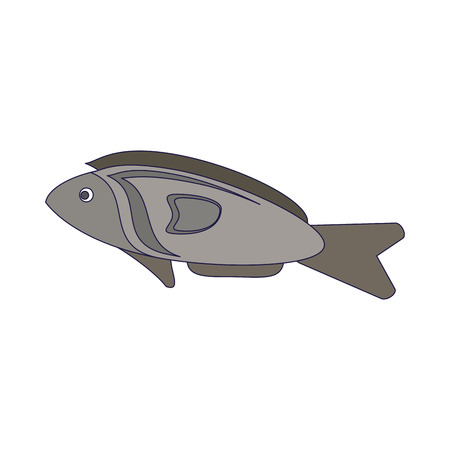Introduction to Ledgering and River Trent Barbel
If you’re keen to experience one of England’s most storied angling traditions, look no further than ledgering for big barbel on the mighty River Trent. Ledgering is a classic method that has stood the test of time with British anglers, prized for its ability to target hard-fighting river species with precision and subtlety. The River Trent itself is iconic in the world of coarse fishing, renowned across the country as a mecca for specimen barbel. Local anglers are especially passionate about these powerful fish, not just for their size and strength but also for the rich heritage they represent in British coarse angling culture. On any given weekend, you’ll find seasoned regulars sharing bankside tips over a flask of tea, swapping tales of epic battles with double-figure barbel as the sun sets behind the willows. It’s this blend of tradition, local knowledge, and genuine camaraderie that makes ledgering on the Trent such an essential part of the UK’s angling scene.
2. Essential Tackle and Bait Selection
If you’re planning a session of ledgering for big barbel on the River Trent, having the right tackle and bait is absolutely essential. Local anglers are known for their tried-and-true preferences, often favouring robust British brands and time-honoured baits that have produced results season after season. Below, you’ll find a guide to some of the most popular rods, reels, rigs, and baits among Trent regulars.
Locally Preferred Rods and Reels
The River Trent’s flow and the formidable size of its barbel call for sturdy yet sensitive gear. Most local anglers opt for rods around 1.75lb to 2lb test curve—offering enough backbone to handle double-figure fish while maintaining tip sensitivity for those subtle bites. Popular choices include:
| Rod Brand | Model | Why Locals Like It |
|---|---|---|
| Daiwa | Barbel Specialist Twin Tip | Versatile tips for changing river conditions |
| Greys | Prodigy Barbel | Excellent power and responsive action |
| Korum | Barbel Rods | Great value with reliable performance |
Reels are just as important—look for robust baitrunners or freespool models in the 4000–6000 size range from trusted brands like Shimano, Daiwa, or Okuma. A smooth drag is key when battling hard-fighting Trent barbel.
Rigs That Get Results
Trent regulars swear by straightforward but effective ledger rigs. The go-to setup is usually an inline or running lead (2–4oz depending on flow), a strong hooklink (10–15lb fluorocarbon or coated braid), and a size 8–12 wide gape hook. The use of anti-tangle tubing and quick-change swivels helps keep things tidy and efficient.
Tried-and-Tested Barbel Rigs Table
| Rig Type | Main Feature | When To Use It |
|---|---|---|
| Helicopter Rig | Reduces tangles in strong flow | Fast-flowing swims or when using heavier leads |
| PVA Bag Rig | Presents bait tightly around the hookbait | When targeting pressured fish or in colder months |
| Straight Lead Rig | Simplicity and sensitivity for shy biters | Milder conditions and clear water swims |
Bait Selection: Local Favourites and British Staples
No guide would be complete without highlighting the legendary baits that have accounted for countless River Trent barbel over the years. Luncheon meat remains a staple—cubed or flavoured with garlic or spicy powder for added attraction. Other favourites include:
- Halibut pellets – especially 8mm or 14mm sizes, often hair-rigged with a matching dumbbell boilie stopper.
- Boilies – fishmeal-based varieties work well; locally rolled ‘Trent Specials’ are highly sought after.
- Caster and hemp – particularly effective in summer when barbel are actively grubbing along gravel runs.
- Maggots – used singly or bunches on a maggot clip for winter sessions.
The combination of quality British tackle, locally preferred rigs, and classic baits is what gives Trent anglers their edge. With these essentials sorted, you’re well on your way to joining the ranks of those who regularly bank trophy-sized barbel from this iconic English river.

3. Choosing the Perfect Swim
Picking the right swim on the River Trent is a skill in itself, and local knowledge goes a long way. Seasoned Trent barbel anglers often begin by carefully reading the river—spotting those subtle differences in flow, depth, and underwater features that make all the difference. The Trents famous for its gravel bars, deep runs, and sweeping bends; each stretch has its own unique character and potential. Take your time to watch the water: look for where the current slackens off behind snags or along the edges of gravel patches—these are classic barbel holding areas.
Understanding Flow and Features
The Trent can be as moody as it is mighty, with flows changing rapidly after rain. Locals recommend focusing on steady, oxygen-rich water just downstream of riffles, or where faster water tails off into deeper glides. Don’t ignore those overhanging willows or submerged trees—barbel love a bit of cover and security from boat traffic or bright sunlight.
Gravel Bars: The Barbel Magnet
No discussion about picking swims on the Trent would be complete without mentioning gravel bars. These natural fish magnets create breaks in the current, offering barbel a perfect spot to feed while conserving energy. Use a lead to gently feel for changes in riverbed texture—those crunchy patches signal youre in prime territory.
Local Tips on Top Stretches
If you’re new to the Trent, don’t be shy about chatting to regulars at well-known stretches like Collingham, Fiskerton, or Newark Dyke. Local anglers often suggest arriving early to secure a popular peg and always being respectful of club rules. Each section of the river reveals its secrets slowly; patience and observation are rewarded here. Remember, it’s not just about casting out—it’s about tuning in to the river’s rhythm and letting its character guide your approach.
4. Ledgering Techniques: Tried and Tested Tactics
Success on the River Trent, especially when targeting its legendary big barbel, often comes down to your ledgering technique. Here’s a step-by-step guide to proven methods that local anglers swear by, ensuring you’re well-prepared for those hard-fighting specimens.
Step 1: Choosing the Right Feeder Setup
On the Trent, feeder choice can make all the difference. Most seasoned anglers opt for cage or open-end feeders, which allow a steady release of bait in the river’s strong flow. A classic running rig with a gripper lead is ideal for holding bottom and avoiding drag from weed or debris. Below is a quick comparison table of popular setups:
| Feeder Type | Main Advantage | Best Use |
|---|---|---|
| Cage Feeder | Quick bait release; attracts fish fast | Fast-flowing swims |
| Open-End Feeder | Gradual bait dispersal; less spillage | Moderate flow & deeper water |
| Method Feeder | Packed with groundbait; effective in heavy silt | Sheltered or slower-moving areas |
Step 2: Bite Indication – Staying Alert
Bite indication is crucial, as Trent barbel are known for their powerful takes. Most locals use sensitive quiver tips or electronic bite alarms paired with bobbins for visual cues. Keep your rod low and parallel to the bank to minimise wind interference and react quickly when the tip twitches or pulls around violently – classic signs of a Trent barbel on the feed.
Step 3: Playing Powerful Barbel Safely
The moment you hook into a big barbel, keep calm and maintain a steady pressure. The River Trent’s strong current adds an extra challenge, so use a rod with enough backbone (typically 1.75–2lb test curve) and robust mainline (12–15lb) to absorb lunges without risking breakage. Always angle your rod downstream and let the fish run if necessary – patience is key to landing these iconic river giants.
Local Tip:
Many Trent regulars advocate pinning down your mainline with backleads or sinking it well to avoid spooking wary fish in clear conditions. This subtle touch can mean the difference between blanking and connecting with a true specimen.
5. Respecting Local Etiquette and Conservation
Ledgering for barbel on the River Trent is not just about the thrill of the catch; its equally about embracing the longstanding etiquette and conservation values that underpin this storied waterway. The Trent boasts a proud angling tradition, where local knowledge is handed down through generations and a strong sense of camaraderie binds its fishing community. To fish here is to join a fellowship that respects both fish and fellow anglers.
First and foremost, always acquaint yourself with the specific rules set by local angling clubs. Many stretches of the Trent are controlled by clubs such as Nottingham Anglers Association or Burton Mutual, each with their own set of regulations regarding seasons, permitted baits, and tackle restrictions. Taking a moment to chat with club members at the bankside or in the nearby pub can offer invaluable insights while helping you avoid any inadvertent faux pas.
Catch-and-release is widely practiced along the Trent, particularly with specimen barbel. Handle these hard-fighting fish with care: use a soft, knotless landing net, keep them wet at all times, and support them gently in the margins before release. Barbel are especially vulnerable after an energetic fight—allow them time to recover fully before letting go. This mindful approach helps sustain healthy stocks for future generations, a value deeply cherished among Trent regulars.
Angling etiquette goes beyond following rules—it’s about respecting your neighbours on the riverbank. A friendly nod or brief exchange is customary when setting up nearby, ensuring you don’t encroach on another’s swim. Keep noise to a minimum, tidy your peg before leaving, and dispose of litter responsibly; nothing raises local hackles faster than leaving rubbish behind.
Perhaps most importantly, take time to soak in the convivial spirit that defines angling on the Trent. Whether sharing a flask of tea or swapping tales of memorable catches under dusky skies, youll find that good manners and mutual respect are as much a part of the experience as landing a prized barbel. By observing local customs and prioritising conservation, you’ll not only enhance your own session but also contribute to safeguarding this iconic river for years to come.
6. Seasonal Considerations and Best Times to Fish
When it comes to ledgering for big barbel on the River Trent, timing truly is everything. Barbel are renowned for their spirited fights and elusive nature, making them a prized catch among British anglers, but understanding the river’s seasonal rhythms is crucial to maximising your chances.
Peak Barbel Seasons on the Trent
The traditional coarse fishing season kicks off on June 16th, with summer and early autumn standing out as prime periods for barbel action. From late June through September, water temperatures rise, prompting barbel to feed more actively, especially during mild evenings or after spells of rain. Many local anglers mark July and August as the absolute best months for targeting specimen-sized fish, with dusk and dawn sessions often producing bumper catches.
Weather and Water Level Influences
The River Trent’s character can shift dramatically with the weather. After heavy rainfall, increased flow and slightly coloured water can put barbel on the feed, making these conditions ideal for ledgering. Conversely, prolonged dry spells can lead to clearer, lower water which often makes fish wary and bites harder to come by. Savvy locals recommend keeping a close eye on river levels via online gauges; a gentle rise in water usually signals a window of opportunity.
Local Expert Advice: When to Plan Your Trip
Regulars on the Trent suggest planning your trip around stable weather patterns rather than specific dates alone. If you’re after a real giant, consider targeting the river just as the first autumn chills set in—barbel instinctively bulk up before winter sets in, offering some of the season’s most memorable sport. Avoid extremely hot midday periods in summer; instead, opt for evening or early morning when both fish activity and angling camaraderie along the banks are at their peak.
In summary, adapting your approach to match seasonal changes and river conditions is key to ledgering success on the Trent. By aligning your visit with local knowledge and proven tactics, you’ll be well-placed for an unforgettable session chasing some of Britain’s finest barbel.


